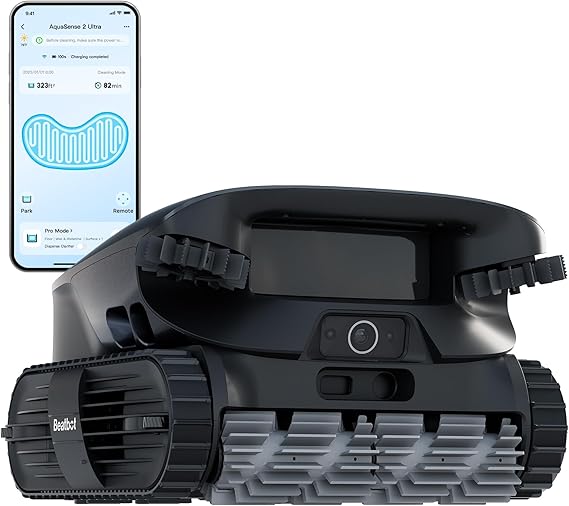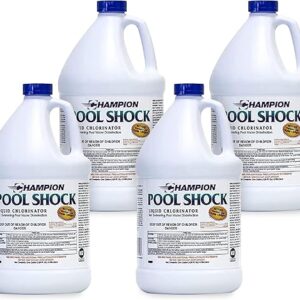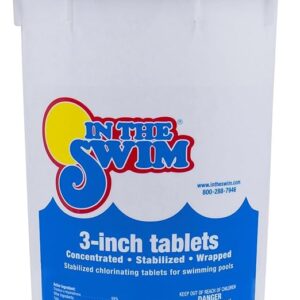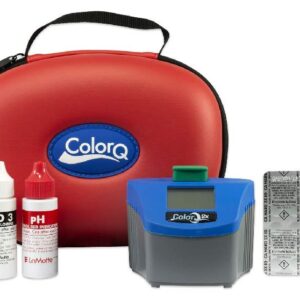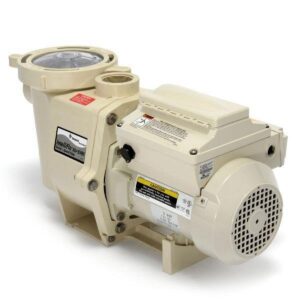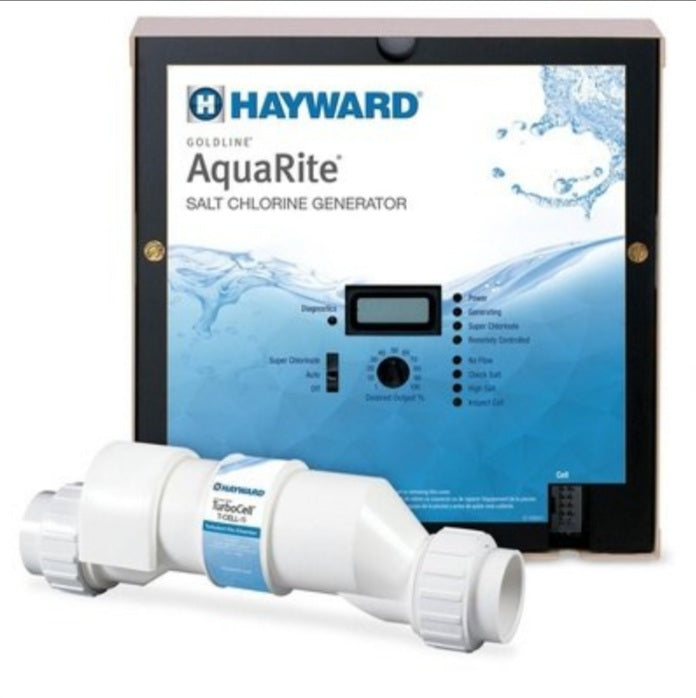How to Clear and Prevent Calcium Flakes in Pool and Spa
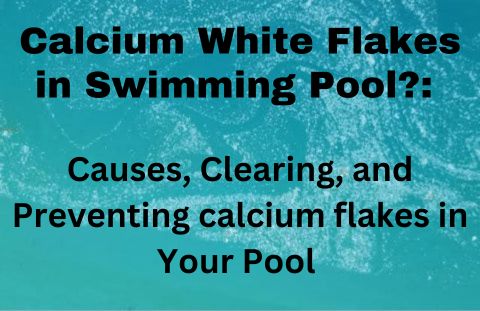
What Causes White Calcium Flakes in a Swimming Pool?
Developing white flakes or calcium buildup in a non-saltwater pool is not common unless you use a pool heater or have not been monitoring and balancing Calcium Hardness (CH), pH, TA, and other mineral levels, which have become incredibly high, forming calcium flakes or scales in your pool.
Calcium white flakes are naturally common in saltwater swimming pools. This is because electrolytic chlorine generators have high temperatures and pH. Moreover, calcium is used to produce chlorine, which is introduced into the pool.
If you have a spa or hot tub affected by calcium scales, here is a detailed post about spa and hot tub maintenance, covering everything including spa scales eliminator.
Calcium flakes or buildups do not develop in saltwater pools overnight. They result from the gradual accumulation of calcium scales in the chlorine generator’s salt cell plates.
When you start seeing white flakes entering your pool through the inlet, it’s too late because calcium buildups have already invaded your salt cell plates.
As chlorine is produced in the electrolytic salt cell of a chlorine generator, a byproduct known as sodium hydroxide (NaOH) is formed, which drives the salt cell and its environs to a high pH.
Calcium scales or white flakes always form as a result of three things, and they include:-
1) Heat,
2) High pH and
3) High calcium and mineral levels
All these three factors are abundant in the salt cell and its environment.
Most Loved Cordless Pool Cleaner: Aiper Scuba S1 Cordless Robotic Pool Vacuum Cleaner: Cleaning Schedule, Smart Navigation, Wall, Floor, & Waterline Cleaning, Suitable for all Pools Up to 1,600 sq.ft
When more scales accumulate on the plates in the salt cell, they form calcium buildups. Calcium flakes will be swept through the piping. Soon, you will see white flakes coming out through the return jets or water inlets, settling at the bottom of your pool near the inlet, or floating on top of the water.
Calcium and other minerals, including Phosphates, Silicates, and Sulfates, cause scales and cloudy pool water. As such, you must regularly monitor and control mineral levels in your pool or spa.
Due to the steady production of sodium hydroxide byproduct and the resulting high pH in the chlorine generator, the pH level in your pool water will drift up more often, causing more calcium scales that appear as white flakes.
That’s why when using a Saltwater Chlorine Generator and a pool water heater, your water chemistry must stay on top by regularly measuring and adjusting pH and TA, Calcium Hardness, and mineral levels to keep Calcium scaling at bay.
Calcium scales reduce the lifespan of the entire chlorine generator, reduce chlorine production level, and interfere with your water chemistry, especially the pH and TA, chlorine, and Calcium Hardness.
Since white flakes start forming in your chlorine generator, you can prevent white calcium flakes in a saltwater pool by physically inspecting and cleaning your chlorine generator’s salt cell plates regularly using muriatic acid.
This post covers when to clean your salt cell, how to clean your salt cell, and how to clear white flakes in your pool or spa, whether salt or nonsalt pool.
Related Product: Chlorworks Saltwater Pool System Chlorine Generator for Pools Up to 40,000 Gallons
When to Clean Your Chlorine Generator’s Salt Cell
Top-brand Chlorine Generators like Chlorworks and Hayward come with a reminder to inspect and clean your salt cell (Turbo Cell) every 500 hours.
If yours doesn’t have a reminder, you don’t need to wait until you start seeing white calcium flakes in your pool; there are early signs that you can check on frequently, and clean your salt cells early enough to avoid seeing white flakes in your pool again:-
1) High pH and Calcium Levels
You know it’s time to clean your salt cell when pH and Calcium levels in your saltwater pool are scaling high without raising them. Since you test your pool chemicals frequently, if not daily, you will know when pH, TA, or CH levels drift and take necessary measures to clean your salt cells and balance the chemicals appropriately.
View All Recommended Swimming Pool Chemicals
2) Low Chlorine Production
Another good indicator of cleaning your salt cells is when your chlorine production level is low, and your free chlorine will not easily rise to the required levels. Calcium buildups reduce the efficiency of chlorine generators, and as a result, less chlorine will be produced.
Related Article: Saltwater Pool Maintenance
3) Every 500 Hours or 3 Months of Use
Also, it’s a good maintenance practice to inspect and clean your Saltwater Chlorine Generator every three months or 500 hours of use because either way, your salt cells will accumulate calcium buildup on the plates after some time of use, a fact that most manufacturers of chlorine generators will not constantly remind you.
Related Products: 16000 BTU Heat Pump for Upto 5000 Gallons Above-ground Pools & Spas, Heater and Cooler with WiFi Timer, 120V
Raypak 399,000 BTU Natural Gas Pool Heater – Electric Ignition
Mild Acid Wash: Cleaning the Electrolytic Chlorine Generator in 5 Steps
To clean your salt cell, you will need a garden hose or pressure washer, Muriatic acid, and water. Before handling muriatic acid, wear gloves and goggles to avoid injuries.
1). Turn off your pool circulation pump, turn off the power to the saltwater chlorine generator control box if you have Hayward Aquarite, and disconnect the ionizer salt cell or Turbo Cell from the plumbing.
2). Inspect the plates for visible Calcium scales and wash them off using a garden hose. Don’t worry if the garden hose doesn’t remove all the calcium build-ups or visible rust, as Muriatic acid wash will.
3). Add 1 gallon of water in a bucket and add 1 quarter of muriatic acid inside the bucket (4:1 water to acid) to form a mild muriatic acid.
4). If you have Hayward Turbo Cell, don’t dip it in the acid solution but place the T-Cell in the cleaning stand so that it is in a vertical position, then pour muriatic acid solution slowly through the Cells to fill it with acid solution and leave for 15 minutes or until the bubbles settle. This will remove tough calcium buildups and any rust visible on the salt cell. Then, pour the acid back into the bucket. If you use an ionizer salt cell, dip the salt cell in the mild muriatic acid for 15 minutes or until the bubbles settle and remove the salt cell. Repeat the process of the mild acid wash until you can see no more buildup or stains.
5). After the mild muriatic acid wash, rinse the salt cell with a hose pipe to remove loose buildups and rust. Then, reinstall the salt cell in the plumbing and put the pump back on.
Related Product: CHLORWORKS Salt Cell for Pool – Model CWPC, Compatible with Pentair IntelliChlor IC20, Supports Pools up to 20,000 Gallons
How to Get Rid of White Calcium Flakes in a Swimming Pool
To clear white flakes from your pool, ensure you have cleaned your salt cell and follow these next steps.
1). Since white flakes are simply calcium buildups, your calcium hardness (CH) level is expected to be higher in your pool than the recommended 250 ppm to 350 ppm. To lower your CH level, you will have to drain and refill a portion of your pool water with fresh water, which is the only practical way you can lower your calcium levels.
2). Lower and balance your pH and TA levels between 7.2-7.4 and 80-120ppm respectively, using muriatic acid. Since chlorine generators will raise your pool pH, an ingredient in developing calcium buildups, lowering the pH in your pool will eventually reduce the calcium buildups in your water.
3). If lowering calcium and pH levels does not yield the expected results faster, use a calcium scale remover and preventer. To avoid more scaling in the future, you may need regular doses of scale control chemicals like Orenda CS-1000. However, that is not a scapegoat for cleaning your salt cells regularly.


